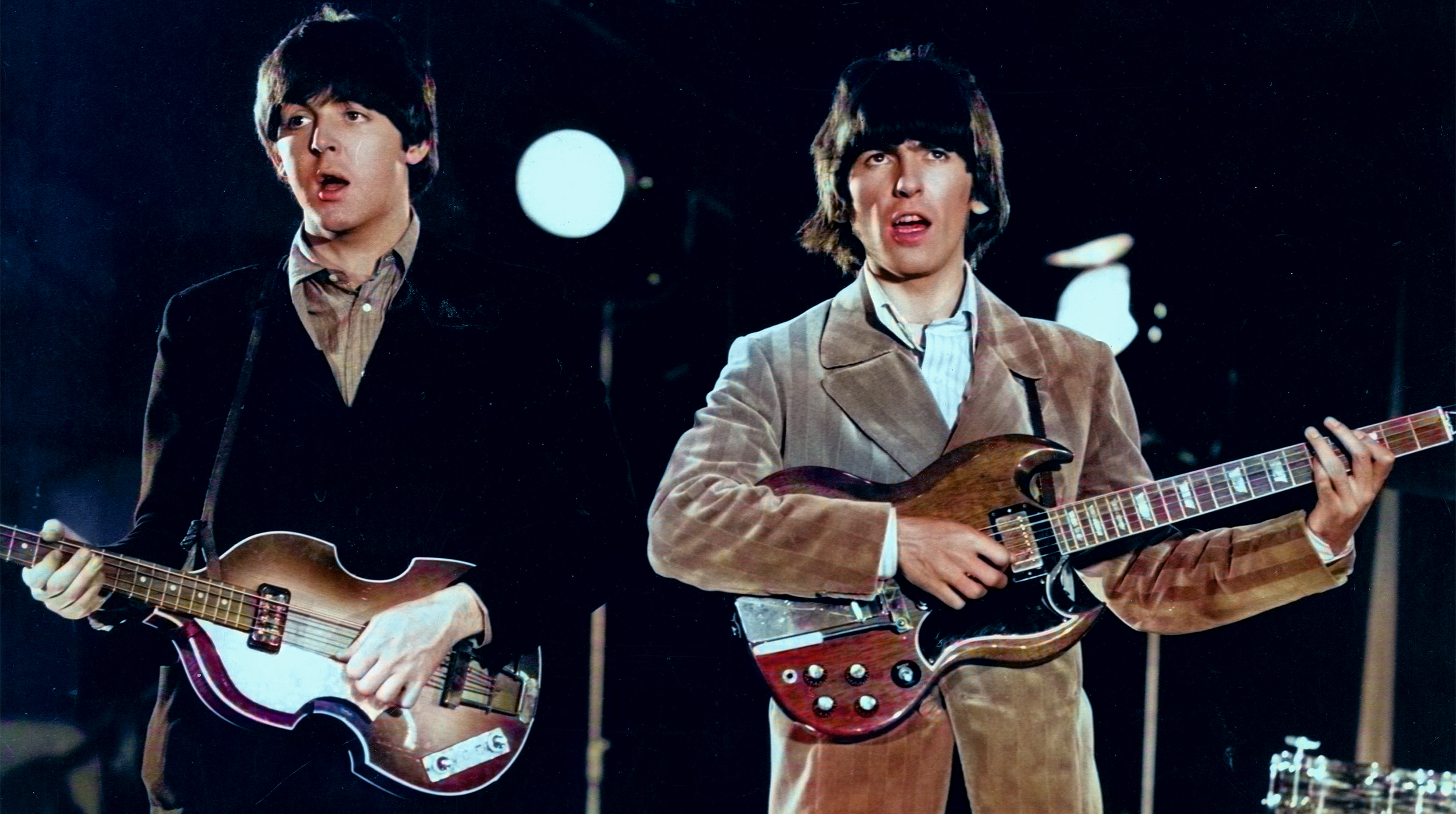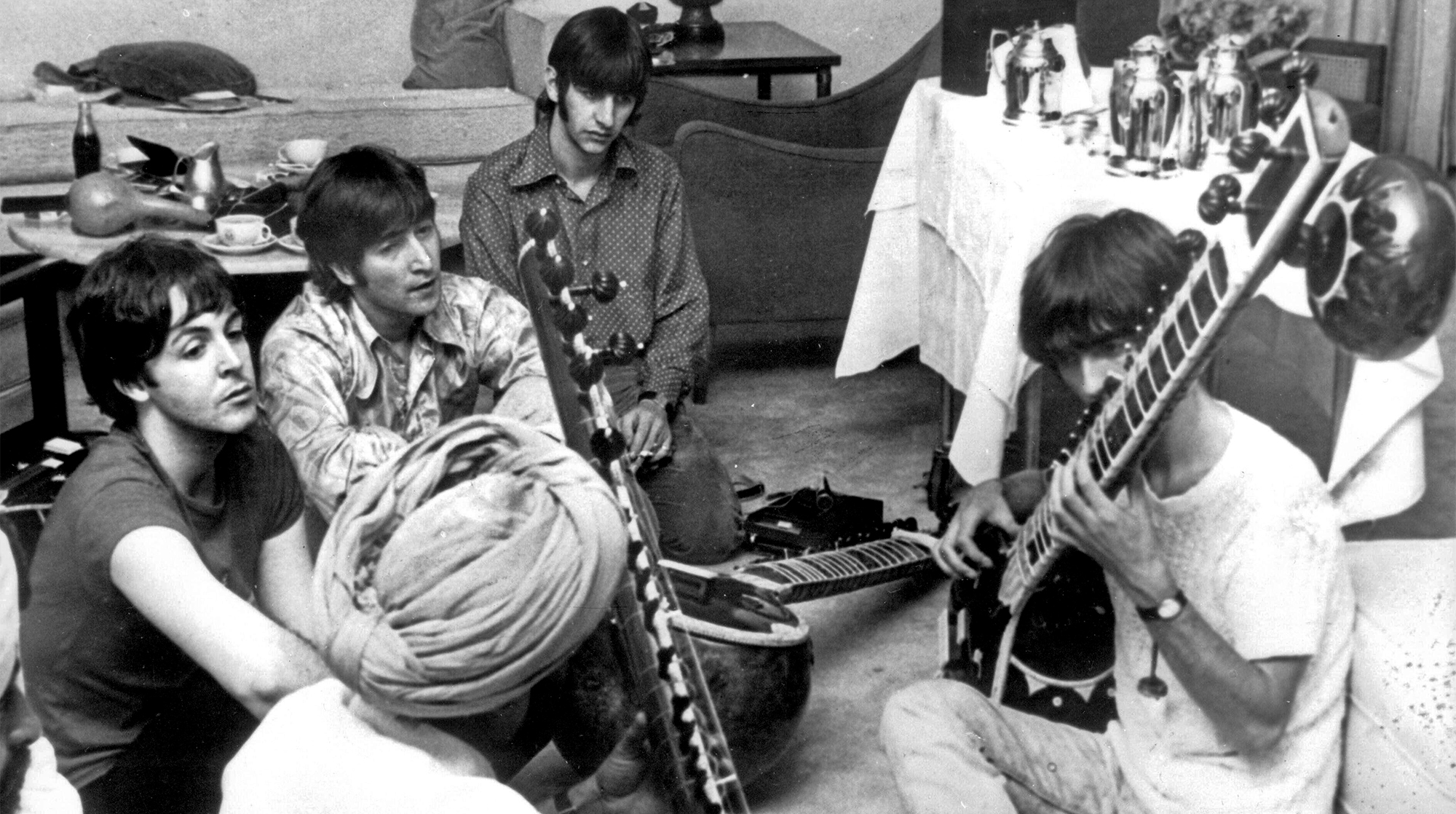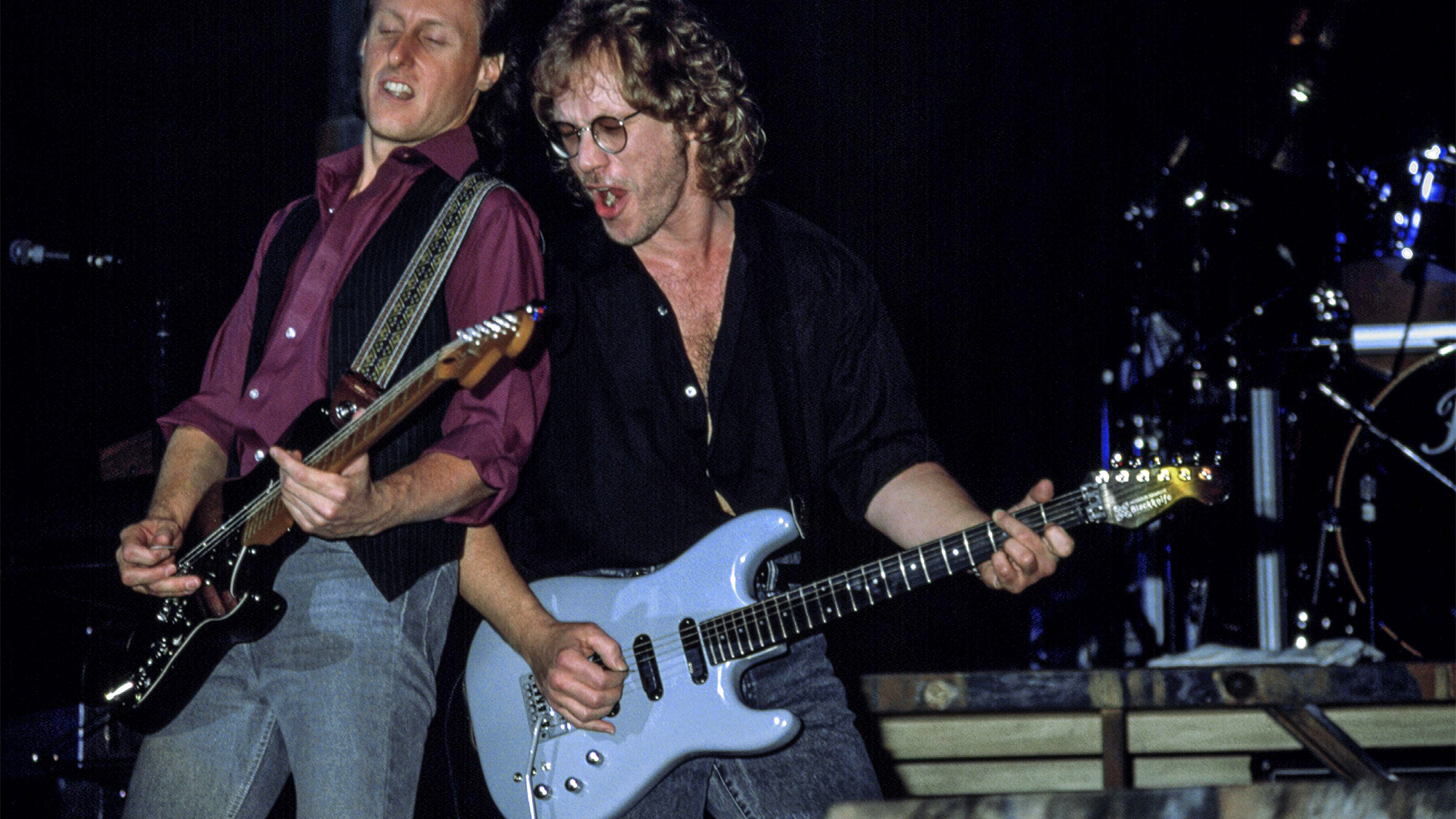“We had a barney and I said, ‘Oh, eff you!’ I think George played bass.” When Paul McCartney stormed out of a Beatles session, George Harrison was the glue that held it all together
As 1966 got underway, Harrison took on new roles in the Beatles — including substituting for McCartney as he veered away from playing bass guitar

Beatles history is full of stories about Paul McCartney’s dual life as a bassist and guitarist. After getting saddled with the instrument when Stuart Sutcliffe left the group in July 1961, McCartney didn’t play guitar with the Beatles again until 1965’s Help! album. In addition to performing acoustic guitar on the album cut “Yesterday,” he took electric guitar solos on the songs “Another Girl,” “The Night Before” and “Ticket to Ride.” It was quite a shift for McCartney, considering he’d originally been put off playing lead guitar after his first attempt to do so onstage became a disaster.
In fact, it was that very episode of stage fright that resulted in George Harrison joining the group, at McCartney’s suggestion, seeing as neither he nor John Lennon had any facility for playing lead. Paul’s inability is ultimately what got him stuck playing bass, as Lennon had no ability to play the instrument and Harrison was too vital as a lead guitarist.
Of course, once McCartney began to solo, it was hard to stop him. He took solo sports on Harrison’s Revolver cut “Taxman,” when Harrison was unable to come up with anything satisfactory, and he soloed again on tracks like Sgt. Pepper’s’ “Good Morning Good Morning” and the White Album’s “Helter Skelter.”
What’s less known is that Harrison had a similar fluidity when it came to his guitar skills. Just as McCartney moved between bass and guitar, Harrison filled in for McCartney on bass on several recordings when Paul was playing another instrument or — in the case of one song — when he walked out of the session in anger.
It’s like a lunatic playing. I’m doing exactly what I do on the guitar.”
— George Harrison
Harrison is credited with playing bass in 1969 on Abbey Road’s “Maxwell’s Silver Hammer” and the medley “Golden Slumbers” and “Carry That Weight,” while McCartney was tickling the ivories. As he recalled in a 1987 interview with Creem magazine, he also played bass on his song “Old Brown Shoe.”
“It’s like a lunatic playing,” Harrison said, to which the interviewer replied, “It sounds like McCartney was going nuts again.” George replied that he was playing bass. “I’m doing exactly what I do on the guitar.”
Well before those recordings, Harrison was beginning to pick up the low end on the Revolver album. It’s widely thought he plays bass on McCartney’s “Good Day Sunshine.” Beatles historian Mark Lewisohn said the piano, bass and drums are all recorded on one track. If McCartney played piano, as is assumed, that leaves only Harrison to play bass.
All the latest guitar news, interviews, lessons, reviews, deals and more, direct to your inbox!
But there’s one Revolver song we can be quite certain Harrison plays on: “She Said She Said.” The Lennon-penned tune was the last one recorded for the album and the only one of its tracks that was cut in a single session, which took place on June 21 of that year. McCartney was present at the start of the session, but he’d left before the Beatles recorded the version that appears on the album. He explained why to his biographer Barry Miles for his 1997 book Many Years From Now.
I think it was one of the only Beatle records I never played on.”
— Paul McCartney
“I think it was one of the only Beatle records I never played on,” he recalled. “I think we’d had a barney or something and I said, ‘Oh, fuck you!’ and they said, ‘Well, we’ll do it.’ I think George played bass.”
While no other Beatles is known to have corroborated McCartney, Robert Rodriguez, in his 2012 book on the making of Revolver, notes that if McCartney had been present, his bass would have been recorded on the same track as Ringo Starr’s drums, given how the group made use of the limited four-track technology of the time. But Rodriguez says the song’s original stereo mix has the bass and drums panned separately, meaning they were on different tracks. That suggests it was added later, presumably by Harrison, after the basic track was recorded.
But why would McCartney storm out of a recording session? And why on this song?
The Beatles were at a difficult juncture in their personal growth at this particular time. Throughout the group’s history, the four men had experienced nearly everything together, from touring the world to making films and and smoking pot for the first time, courtesy of Bob Dylan.
But McCartney had been the lone holdout when it came to LSD. His unwillingness to try acid would ultimately create a rift with Lennon, who felt his longtime songwriting partner was refusing to partake of what he considered a transformative and eye-opening experience.
“She Said She Said” would have been a particular sticking point for Lennon. He’d written the tune after he, Harrison and Ringo Starr dropped acid with the Byrds’ Roger McGuinn and David Crosby in the summer of 1965, while the Beatles were in Los Angeles at the end of that year’s U.S. tour.
In L.A., the second time we took it, Paul felt very out of it because we were all a bit slightly cruel, sort of, ‘We’re taking it, and you’re not.’”
— John Lennon
Actor Peter Fonda was there as well. When Harrison, in the midst of his trip, said he felt like he was dying, Fonda — who had died and been revived after accidentally shooting himself as a youth — piped up, “I know what it’s like to be dead.” It was the very line Lennon memorably picked up and used in “She Said She Said.”
Although McCartney tried acid for the first time shortly before the Revolver sessions began, he felt alienated by the others after his refusal to join the party in 1965. Lennon said so himself a 1971 interview with Rolling Stone.
“In L.A., the second time we took it, Paul felt very out of it because we were all a bit slightly cruel, sort of, ‘We’re taking it, and you’re not,’” Lennon recalled.

Rodriguez surmises that recording “She Said She Said” might have brought back McCartney’s feelings of alienation or possibly caused his bandmates to tease him about his initial refusal.
What seems evident is that the argument wasn’t between John and Paul but between Paul and the others: “They said, ‘Well, we’ll do it.’”
In the 2022 Revolver: Special Edition release, archivist Kevin Howlett says he believes the argument that day was about the song’s arrangement and took place during the overdubbing process. But the Beatles had certainly disagreed on arrangements before and worked out their differences without anyone storming out of the studio. For that matter, why would McCartney be upset about something John wanted for his song? It was generally agreed that whoever wrote the song in the Beatles took charge of its direction.
Whatever the cause, it’s striking that McCartney would walk out of the session, particularly as it was the last time the Beatles would be able to work on Revolver. In two days, they would leave for a tour of Germany to launch the first leg of what would be their final world tour.
I like a bass when it doesn’t get in the way of anything. For my kind of music, bass just has to hit the right notes at the right time.”
— George Harrison
As for the instrument Harrison used, it’s well documented that he had a Burns Nu-Sonic bass guitar at the time, and it’s likely the instrument he played on “She Said She Said.” Among the Beatles, Harrison was the one most avid about guitars, and he was quite a fan of bass guitar, telling Creem magazine in 1987 that he enjoyed playing the instrument.
“I think bass is a good instrument, because even without being clever, the part of the bass is really important in the way it holds it all down with the bass drum,” he said.
And unlike McCartney, his parts tend to be the simpler ones (his bass line on “Old Brown Shoe” notwithstanding).
“I like a bass when it doesn’t get in the way of anything. For my kind of music, bass just has to hit the right notes at the right time.”
Christopher Scapelliti is editor-in-chief of GuitarPlayer.com and the former editor of Guitar Player, the world’s longest-running guitar magazine, founded in 1967. In his extensive career, he has authored in-depth interviews with such guitarists as Pete Townshend, Slash, Billy Corgan, Jack White, Elvis Costello and Todd Rundgren, and audio professionals including Beatles engineers Geoff Emerick and Ken Scott. He is the co-author of Guitar Aficionado: The Collections: The Most Famous, Rare, and Valuable Guitars in the World, a founding editor of Guitar Aficionado magazine, and a former editor with Guitar World, Guitar for the Practicing Musician and Maximum Guitar. Apart from guitars, he maintains a collection of more than 30 vintage analog synthesizers.


